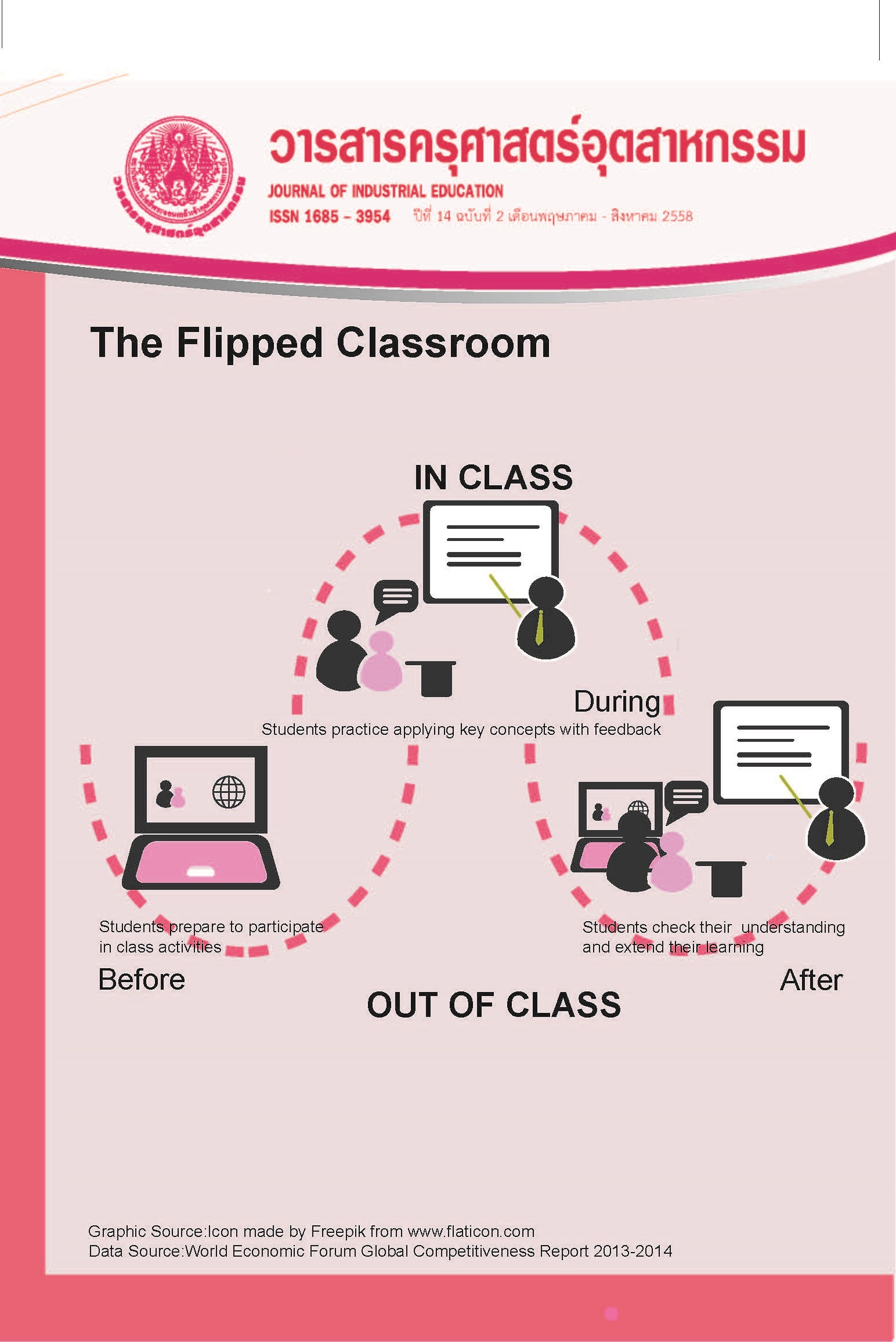Model of Ecological Ethics for Environmental Conservation for Undergraduate
Main Article Content
Abstract
The objective of this study was to develop a causal relationship model of ecological ethics and environmental education affecting environmental conservation behavior for global warming alleviation through inspiration of environmental conservation. The population was 3,135 undergraduates of Kalasin Rajabhat University. The samples of 435 undergraduates were collected. The questionnaire was used as a tool for data collection. The Structural Equation model (SEM) was used for model verification.
The results revealed that the structural model of confirmatory factors of Ecological Ethics (EcoE) and Environmental Education (EE) were able to explain the variation of endogenous factors of Inspiration of Environmental Conservation (IEC) that cause Environmental Behaviors for Global Warming Alleviation (BEH) with 72.00 percent. Moreover, the confirmatory factors of EcoE and EE were able to explain the variation of IEC with 43.00 percent.
Article Details
"The opinions and contents including the words in papers are responsibility by the authors."
"ข้อคิดเห็น เนื้อหา รวมทั้งการใช้ภาษาในบทความถือเป็นความรับผิดชอบของผู้เขียน"
References
[2] National Research Council of USA. 2010. Advancing the Science of Climate Change. Washington, D.C.: The National Academies Press.
[3] Thiengkamol, N. 2011e. Environment and Development. (4th ed.).Bangkok: Chulalongkorn University Press.
[4] Afeissa, H. S. 2008 “The Transformative value of Ecological Pragmatism. An Introduction to the Work of Bryan G. Norton”. S.A.P.I.EN.S. 1 (1).
[5] Chapin, F. Stuart; Pamela A. Matson; Harold A. Mooney 2002. Principles of Terrestrial Ecosystem Ecology. New York: Springer.
[6] Krebs, Charles J. 2009. Ecology: The Experimental Analysis of Distribution and Abundance. (Sixth ed.). San Francisco: Benjamin Cummings.
[7] Molles, M. 2009. Ecology, Concepts and Applications. The Fifth Edition. New York: McGraw-Hill.
[8] Schoener, T.W. 2009. The niche. pp 3-13 in S. Levin (Ed.) Princeton Guide to Ecology. Princeton University Press, Princeton NJ.
[9] Smith, P.; Ashmore, M.R.; Black, H.I.J.; Burgess, P.J.; Evans, C.D.; Quine, T.A.; Thomson, A.M.; Hicks, K.; Orr, H.G., (2013) The role of ecosystems and their management in regulating climate, and soil, water and air quality., Journal of Applied Ecology, 50, 812-829.
[10] Hicks, K., and Orr, H.G. 2013. EVIEW: The role of ecosystems and their management in regulating climate, and soil, water and air quality. Journal of Applied Ecology, 50(4), 812–829.
[11] Singer, Peter. 1991. Environmental Values. The Oxford Book of Travel Stories. Ed. Ian Marsh. Melbourne, Australia: Longman Chesire, p 12-16. (Sep 19, 2013).
[12] Kochi, T. & Ordan, N. 2008. “An Argument for the Global Suicide of Humanity”. Borderlands, 3, 1-21.
[13] Curry, P. 2010. Ecological Ethics: An Introduction. 2nd Edition. Hoboken, NJ: Wiley.
[14] Thiengkamol, N. 2012h. Model of Environmental Education and Psychological Factors Affecting to Global Warming Alleviation. Mediterranean Journal of Social Sciences, 3(11), 427-434.
[15] Donkonchum, S., & Thiengkamol, N. 2012. Model of Environmental Education and Psychological State Affecting to Global Warming Alleviation. International Proceedings of Economic Development and Research, 44, 1-5.
[16] Udonboon, C., Thiengkamol, N., & Thiengkamol, C. 2012b. Causal Relationship Model of Water Conservation Behavior. Mediterranean Journal of Social Sciences, 3(11), 591-604.
[17] Chomputawat, S., Thiengkamol, N., Thiengkamol Khoowaranyoo, T. 2013ab. Causal Relationship Model of Environmental Conservation Involved Psychological Factors for Agriculturist. European Journal of Scientific Research, 115(1), 147-165.
[18] Koonboonchan, A., Thiengkamol, N., Thiengkamol Khoowaranyoo, T. 2013a. Causal Relationship Model of Global Warming Alleviation Integrated with Four Noble Truths and Psychological State. European Journal of Scientific Research, 104(3), 418-433.
[19] Prasertsri, N., Thiengkamol, N., Thiengkamol Khoowaranyoo, T. 2013b. “Casual Relationship Model of Learning Behavior of Information Technology Integrated with Psychological Factors. European Journal of Scientific Research, 104(3), 488-503.
[20] Saisunantharom, S. Thiengkamol, N., Thiengkamol, C. 2013a. Casual Relationship Model of Biodiversity Conservation. European Journal of Scientific Research, 104(3), 460-474.
[21] Suebsing, S., Thiengkamol, N., Thiengkamol, C. 2013a. Causal Relationship Model of Forest Conservation Integrated with Psychological State. European Journal of Scientific Research, 104(3), 447-459.
[22] Thiengkamol, N. 2012d. Model of Psychological Factors Affecting to Global Warming Alleviation. International Proceedings of Economic Development and Research, 44, 6-12.
[23] Jongwutiwes, N., Thiengkamol, N., & Thiengkamol, T. 2012b. Causal Relationship Model of Hospital Environmental Management. Mediterranean Journal of Social Sciences, 3(11), 447-458.
[24] Donkonchum, S. Thiengkamol, N., & Thiengkamol, C. 2012a. Causal Relationship Model of Environmental Conservation Behavior Integrated with LCA Knowledge. European Journal of Social Sciences, 33(1), 5-16.
[25] Sangsan-anan, S., Thiengkamol, N., & Thiengkamol, T. 2012a. Causal Relationship Model of Environmental Education Tourism. European Journal of Social Sciences, 33 (3), 339-350.
[26] Kamin, P., Thiengkamol, N., Thiengkamol Khoowaranyoo, T. 2014. Environmental Education and Public Mind Affecting Forest Conservation Behavior. Journal of Industrial Education, 13(3), 181-187.
[27] Dejkunchorn, D., Prasertsri, N., Thiengkamol Khoowaranyoo, T. 2014. Development Model of School Landscape Management for Environmental Conservation. Journal of Industrial Education, 13 (3), 157-164.
[28] Srikaewtoom, N., Thiengkamol, N., Thiengkamol, C. 2014. Development Model of Biodiversity Conservation. Environmental Conservation. Journal of Industrial Education, 13(3), 142-148.

